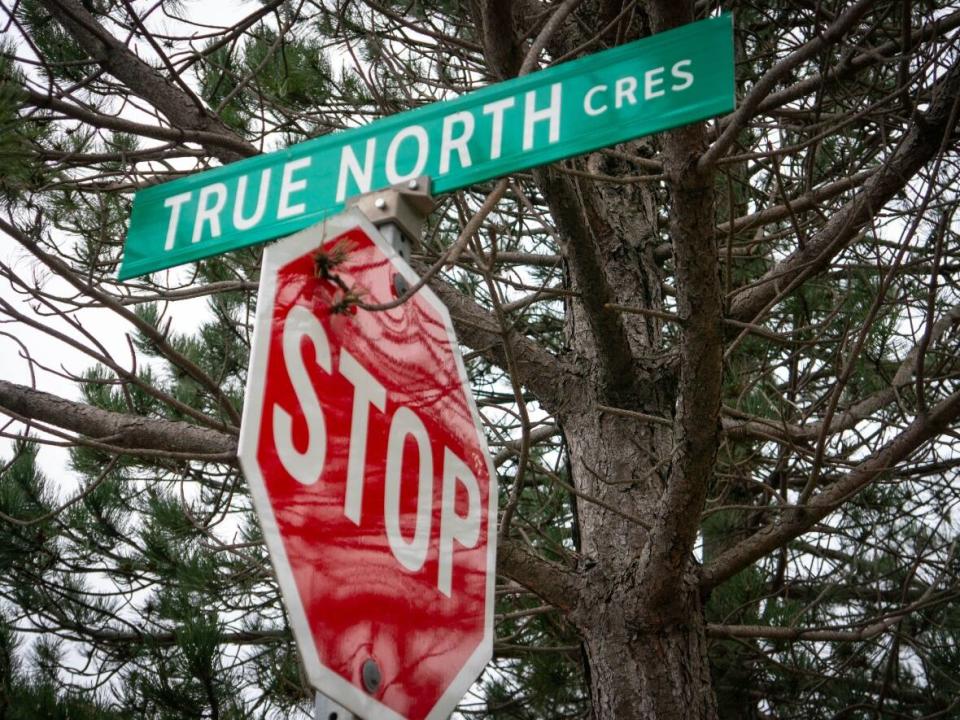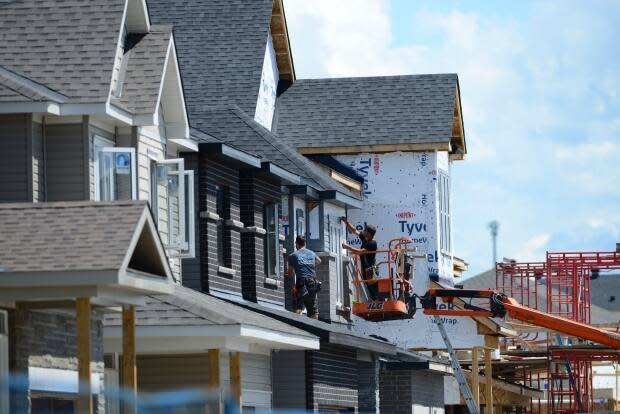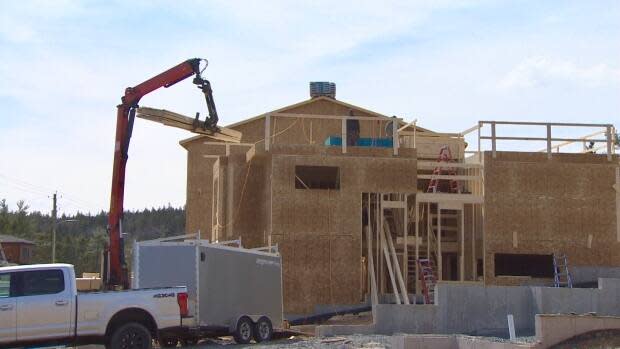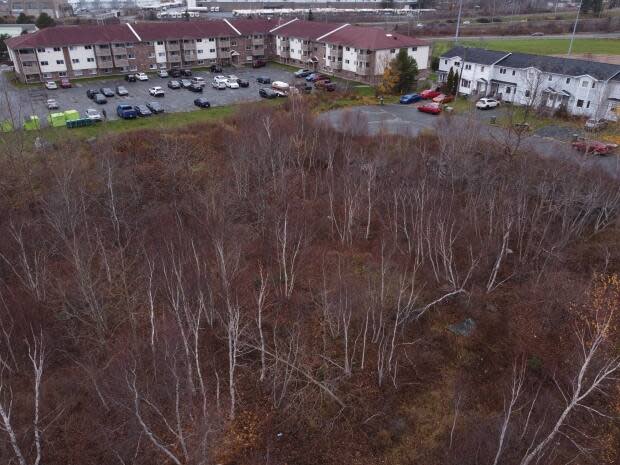Non-profits eager to build affordable housing face a big problem — getting the bank on board

Even when some things go right, creating new affordable housing involves a lot of waiting and hoping.
Four lots in the north end of Dartmouth, N.S., have remained empty — save for thickets of birch trees and brush — more than a year after the Halifax Regional Municipality sold them for $4 to a non-profit housing organization that wants to build 44 units geared to families.
The Affordable Housing Association of Nova Scotia, or AHANS, hopes to offer a variety of price points for townhouses on True North Crescent, including some four and five-bedroom units, which are hard to come by in rentals.
"The goal, really, is to have it very much independently, financially viable at the get-go and to have it mixed income and family oriented," said Jim Graham, the organization's executive director.
But the $12 million project stalled as the association faced the same problem that many other non-profits have encountered. Despite having the land and some government money, AHANS struggled to convince a financial institution to provide the millions in loans needed to get shovels in the ground.
That changed last week when the association finally learned its application to the Canada Mortgage and Housing Corporation's rapid housing program was successful, which will allow it to finalize plans and move forward with construction.

Though there is federal funding available to build housing, there's no guarantee a project will qualify and be accepted. Non-profit organizations, co-operatives and private developers must go through a sometimes arduous process to try to secure funding, at a time when many cities, including Halifax, face a crisis of low rental vacancies.
Despite the huge demand for affording housing, constructing new units can be a daunting and difficult process for many groups that are trying to do so for the first time.
Unlike private developers that can draw on equity from other properties, non-profits often struggle to do the same. Even so, they must still go through the same process to secure loans as any other company looking to build residential units.
"I would say for everybody, it's hard. Even when you have experience and you have the knowledge and the backing, it is very challenging," said Jody Comeau, assistant vice-president of commercial financing with First National Financial, a private lending institution that specializes in mortgages for multi-unit residential buildings in Canada.

Traditionally, lenders cover up to 75 per cent of a project cost, with the developer or non-profit coming up with the rest. Some CMHC programs require even less equity from the developer, sometimes as little as five per cent.
But securing the needed equity can be a problem for some. Comeau said the value of land can count, but it is rarely worth enough to get a project approved, so more funding — and often help from multiple levels of government — is needed.
Will future rents cover loan payments?
Lenders also look at whether a company or non-profit has experience managing housing and collecting rents, Comeau said, to ensure they'll be able to generate the revenue needed to pay back a loan.
At the end of the day, the revenue needs to balance out the cost of finishing and maintaining a building. And he said the rising price of construction material and labour adds to the challenge of providing affordable units.
"The formula really is no secret. It's an easy one. As costs continue to rise, it means the only way to get value good enough to support the cost for the lending institution to be OK with being a part of a project like that, it simply means that rents have to rise with it," he said.

When non-profit groups don't have people with construction or building management experience on their team, he said some of the risk can be offset by hiring third parties, but that can also drive up the costs.
"In some cases, it can take years. It depends on the not-for-profit's ability to come up with funding. As their capacity or their funding is less, then you just have to be more creative and have to work harder and try to make numbers work. But in an environment where costs continue to escalate, rates continue to rise, it does get harder, for sure," Comeau said.
'Just grind you down'
AHANS does have housing experience, overseeing the creation of about 100 new units in the past two years. It's in the process of converting a former Travelodge hotel on Yorkshine Avenue in Dartmouth into 65 units in hopes of providing supportive housing for people who are homeless.
Graham said the organization was also fortunate to be able to come up with money for a down payment for the True North Crescent townhouses and has earned money doing consulting work.
"That gave us a little bit. And we apply [for government funding]. But that's how you piece things together," he said. "It's hugely challenging and it can... just grind you down."

AHANS learned last week it will be getting about $3.8 million through the CMHC's rapid housing initiative, a program aimed at quickly creating affordable housing units. It was the second time the organization had applied for the funding.
Up until now, the construction on the nearly $12-million townhouse project had been in limbo. Despite a provincial contribution of $1.7 million, AHANS was still coming up about $1.8 million short of what its bank required to back the mortgage.
The challenge of accessing financing and funding was echoed by people across Nova Scotia during consultations earlier this year about the community housing sector, said Pauline MacIntosh, a professor with St. Francis Xavier University's extension department.
For the last nine months, she has been gathering feedback through the Build Together project, a partnership with a national non-profit based in Montreal, the Community Housing Transformation Centre.

MacIntosh said many organizations that want to provide more housing are run by volunteers and they could benefit from the support and expertise of a provincial association that could provide guidance with funding applications and collaborate with government .
"It takes a lot of energy," she said. "We can't rely wholly on volunteer efforts to carry the work of this sector. We have to look at it more sustainably over the long term."
An association, which some provinces like British Columbia already have, could help people facing similar hurdles compare experiences, share resources and learn from one another, MacIntosh said.
"Ultimately, all of this work exists to create more housing options for people who need them. So the faster we're able to do that, the better it is for everyone in the province," she said.
Call for province to loan money
Graham said it would "fundamentally change the ability of non-profits to deliver" new housing if they could secure debt financing through the provincial government instead of a bank, but that option is not currently available.
"If we were looking at that kind of mortgage financing, where you got a little bit of a lower rate fixed for 15 years, from a non-profit perspective, that's huge," he said.
Krista Higdon, a spokesperson with Nova Scotia's Department of Municipal Affairs and Housing, said in email such a program is being considered by the province.

Though the exact rents of the True North Crescent townhouses won't be set until they are complete, Graham said some units would be considered "deeply, deeply affordable," meaning people with fixed pensions or who rely on income assistance will be able to live there.
More than half would be available for 80 per cent of the market rent. A one-bedroom could be $680, a four-bedroom unit could run for around $1,360 a month, including heat and hot water.
The income from the higher rents will cover costs and ensure the complex won't run at a loss.
"Housing that's sustainable on the basis of its own rents without having to go back to government and say we need more subsidies," said Graham.
MORE TOP STORIES

 Yahoo Finance
Yahoo Finance 